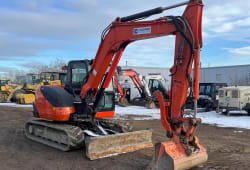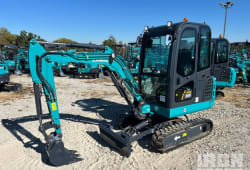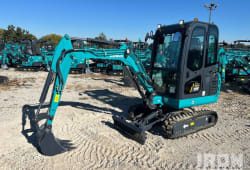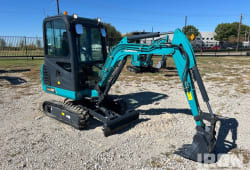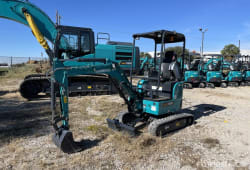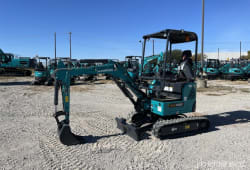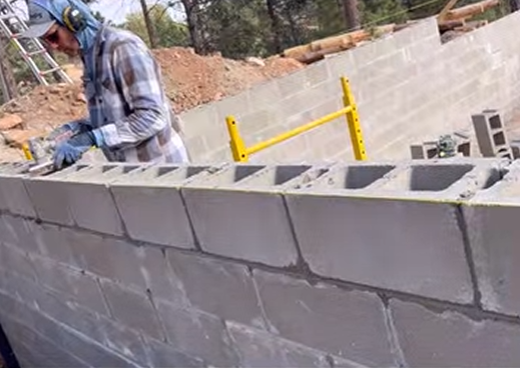Understanding How Much Does a Mini Excavator Weigh
7 Min read
)
March 9, 2022
The same old excavator is a critical piece of the heavy operating system for construction tasks that require demolition, foundation digging, and mining.
:format(webp)) What is a Mini Excavator?
What is a Mini Excavator?
The mini excavator (or compact excavator) is a preferred tool. That requires the most agility in tight, limited areas. It could encompass smaller initiatives, such as tiny homes or home renovations, installing pools, and digging trenches.
The splendid component of compact excavators--a.ok.a. mini excavators--is that their regular jobs experience an efficient length while sacrificing a tremendous amount of digging depth in small spaces.
Several elements to consider while identifying mini excavators or popular excavators include:
Tail Swing
Most Dig depth
Maximum unload top
Working Weight
These crucial elements will now not most effectively assist you in determining the right mini excavator for the process at hand, but whether or not a widespread excavator is the better alternative for you.
What is 0 Tail Swing?
Zero tail swing is critical attention that improves the overall performance of a mini excavator. One can buy an excavator with conventional, decreased, or zero tail swing.
The dimensions and location of the heavy equipment operator's cab concerning the excavator's tracks and counterweight decide the tail swing.
An excavator with a traditional tail swing is a counterweight extending over the edge of the machine's tracks. Conventional tail swings tend to be found on large excavators with better-running weights and excellent stability.
Zero tail swings (or near zero tail swings) have a counterweight that sits tight with the cab and does not rest beyond the brink of the tracks. Mini excavators tend to have 0 or close to 0 tail swing to work with talent within fenced-in belongings traces and along busy roadways.
:format(webp)) What is the most Dig depth?
What is the most Dig depth?
Most dig intensity methods show how low an excavator can dig into the earth.
A mini excavator's weight also can have an impact on dig intensity. A small excavator won't have the counterweight to dig trenches as deep as larger excavators.
This metric is barely unique compared to an excavator's maximum vertical wall depth, which refers to how deep a compact excavator can dig a wholly vertical wall. The max vertical fence will not be as many as an excavator's max dig intensity.
:format(webp)) What is the most unloaded peak?
What is the most unloaded peak?
Maximum dump top is another essential mini excavator spec, referring to the greatest height an excavator's arm can reach to empty its bucket attachment.
This dimension is especially essential when thinking about mini excavator sizes because it can prevent you, the heavy equipment operator, from being able to paint on a project. A small excavator will no longer have as splendid a dump top as a more extensive system or maybe a standard excavator.
It would help to choose an excavator with a better unload top than the dump truck (or a different floor) into which material is moving from the bucket attachment.
:format(webp)) What is running Weight?
What is running Weight?
A mini excavator's weight is commonly described as its running weight. The model operating weight method calculates the burden of the machine in action, calculating the weight brought from fuel, attachments, and the human operator.
Model working weight varies greatly among mini excavators and large fashions. That is the metric we're searching at while we ask, "How much does a mini excavator weigh?"
:format(webp)) Loaded Weight v. Unloaded Weight
Loaded Weight v. Unloaded Weight
Unloaded weight accounts for the device's load with the aid of itself earlier than it lifts, digs, or contains any extra materials or attachments. Loaded weight is how much the mini excavator weighs when it has a full bucket or an attachment delivered to it.
Every machine has loaded weight limits decided through the manufacturer that may be discovered in the mini excavator specifications.
Adhering to loaded weight limits is critical because:
Too much weight can tip the machine.
The operator and others on the job site can be installed in a damage's way
You threaten to break the system and shorten its lifespan
While convenience and agility are significant promoting factors for mini excavator sizes, it's far more essential to avoid purchasing a mini excavator in a way that is too small to carry out safely.
Calculating the precise loaded weight restriction will permit you to balance efficacy and protection requirements and could prevent money from being wasted on system repairs and downtime.
:format(webp)) How Much Does a Mini Excavator Weigh?
How Much Does a Mini Excavator Weigh?
The average mini excavator typically weighs between 5,000 and 10,000 pounds.
The weight of a mini excavator relies upon its make and version and the attachments on every tool. The weight of a mini excavator will vary depending on what it is used for. Finding out what length excavator is first-class relies upon what you propose to use it for.
Why Mini Excavator Weight topics
Compared to larger fashions, mini excavators (or "compact excavators") are significantly less complicated to move to and from job sites, store between initiatives, and maneuver in tight areas. It makes mini excavators perfect for small demolition jobs and smaller initiatives taking region in small or narrow areas.
:format(webp)) Attachments
Attachments
Mini excavators are rather versatile machines with various attachments to pick from.
Listed below are some of the most popular attachments for mini excavators, together with the load every attachment will upload to the device's working weight:
Hydraulic Thumb: adds 60 - 110 pounds
Trenching Bucket: adds 145 - 290 pounds
Hydraulic Breaker: adds 410 - 1160 pounds
Auger Attachment: adds 151 - 217 pounds
Accounting for the introduced weight of an attachment will ensure that you do now not overload your mini excavator or hazard damage to the device or damage to the operator.
:format(webp)) Popular Mini Excavators
Popular Mini Excavators
Yanmar VIO35-6A (8,214 pounds)
John Deere 30G (7,220 pounds)
Doosan's DX35-5 (8,193 pounds)
Case CX37C (7,990 pounds)
Takeuchi TB240 (8,570 pounds)
Kubota KX040-4 (9,195 pounds)
Commonplace uses of Mini Excavators
Mini excavators are a great tool for task websites with constrained space or that require a system that may match into small or slim areas. Because they have near-zero tail swings, they may be appropriately used close to other buildings and systems without posing a chance. In addition, they provide higher accuracy while digging in tight spaces and regions with severe fuel strains or pipes that might be buried close to the task website.
:format(webp)) Many proprietors and operators like mini excavators because they are clean to move and offer a higher gasoline economy. It protects time and money without sacrificing their abilities. They're outstanding to use on softer terrain to avoid damaging grass, soil, or pavement inside the surrounding vicinity. While they do not have quite as good deal of strength as their complete-sized counterparts, they're perfect for a diffusion of jobs inclusive of:
Many proprietors and operators like mini excavators because they are clean to move and offer a higher gasoline economy. It protects time and money without sacrificing their abilities. They're outstanding to use on softer terrain to avoid damaging grass, soil, or pavement inside the surrounding vicinity. While they do not have quite as good deal of strength as their complete-sized counterparts, they're perfect for a diffusion of jobs inclusive of:
Pool set up
Digging graves
Pipe Repair
Landscaping
Renovations
Tree harvesting
Small demolition jobs
Mini excavators are a brilliant addition to any fleet if they operate competently. Understanding the weight of the device and its attachments will help extend the lifespan of your gadget and ensure that it meets all safety requirements. Get more used excavator details at a glance.

Rex Walz is Boom & Bucket's Manager of Supplier Relations, bringing over a decade of experience in B2B sales and heavy equipment solutions. With a background spanning government, construction, industrial, and commercial sectors, he has a proven track record of driving growth and building trusted customer relationships. At Boom & Bucket, Rex is passionate about helping partners succeed while advancing the company's mission to create the most trusted marketplace for heavy equipment.
